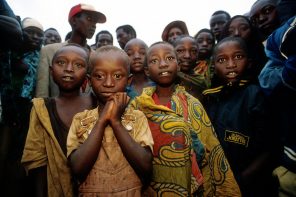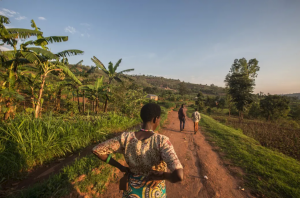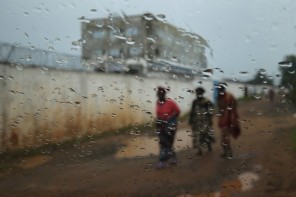I stumbled into a controversy last week when I wrote an article about the new Human Security Report. I wasn’t the only one; lots of outlets picked up the story, first from the AP.* We all went for the predictable — the part of the report that said the commonly cited death toll for the war in the DRC is too high.
Most of barely got to make the obvious point, which Andrew Mack, director of the HSR project, among others made on the phone to me: 3 million, 5 million, or 7 million…any million is too high. The DRC doesn’t get less tragic if the death toll estimate changes.
In any case, you can read those articles to get a sense of the DRC numbers debate — although you should also read the IRC’s statements about its surveys (one for the science-minded, one for the rest of us). And if you’re a nerd like me and this is getting you going, you should check out some of articles here or the (coincidentally timed?) issue of Lancet last week, about violent conflict and public health.
But as the folks at the Human Rights Data Analysis Group point out, you should also pay attention to the other half of the report, which is equally provocative. High-intensity conflict is down 70 percent since the end of the Cold War, it says. Not only that, but fewer people are dying in what are fewer wars. Not only that but mortality rates go down in times of war, it says. It all sounds so good that the HSR program director clarified in the press release announcing the report, “No one, of course, is saying that war is good for you.”
So before you pack up your bags and make for a Congolese refugee camp, consider the data, or HRDAG’s critique of the data. If the Human Security Report guys had critiqued their own data as rigorously as they critiqued the IRC’s data, they would have realized they can’t draw any scientific conclusions about the intensity or nature of warfare. The HSR guys and others respond, at Andrew Gelman’s blog, that their data is in fact precisely suited to mapping global and regional trends in warfare. (Warning: It gets wonky over at Gelman’s…and it’s awesome.)
Like I said, I’m so not a scientist. And it turns out, this is not a new debate. As I dug through the Internets, I learned that there are different schools of thought on how to treat data, build baselines and derive death tolls. Gelman has usefully played host to many of their voices, so if you’re into this, I recommend it.
One bonus bit of optimism from the HSR? One of the reasons they think mortality rates go down in war zones is because humanitarian intervention is so — wait for it — good. Public health interventions, in particular, are effective enough to make people healthier in peace time, which makes them more likely to survive the biggest civilian war calamity, disease. And interventions in conflict zones are so effective that most people get the health treatment they need.
That’s the argument, anyway. Any of you aid workers got ground truth to share?
*PS: Yes, that’s a link to a Taiwan newspaper. That’s because the international press ran a much better version of the AP story than the American press, notably the Washington Post, which shortened it almost beyond meaning.




